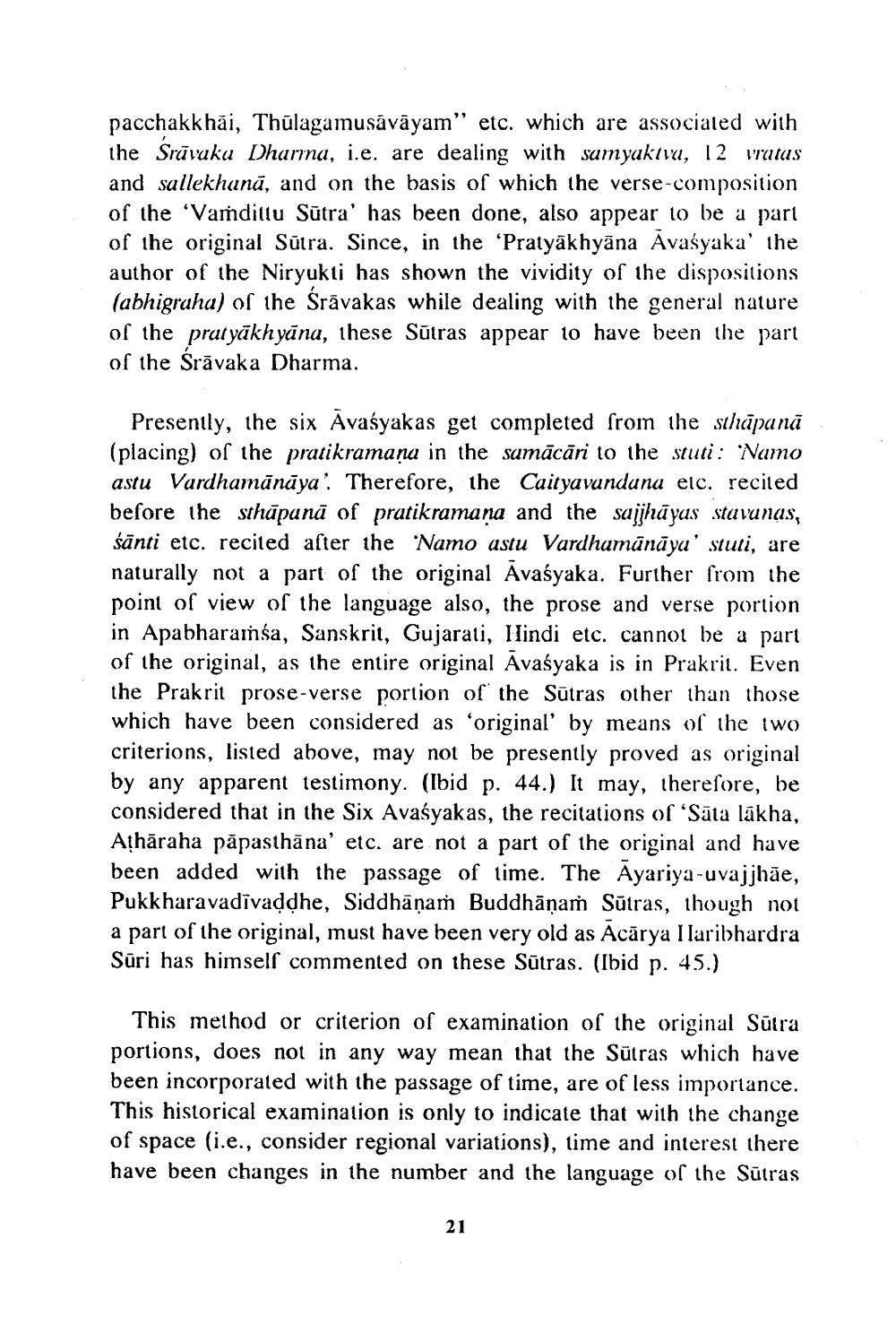________________
pacchakkhãi, Thūlagamusavāyam” etc. which are associated with the Srūvaku Dharina, i.e. are dealing with samyaktvu, 12 vratas and sallekhanā, and on the basis of which the verse-composition of the 'Vamdiulu Sūtra' has been done, also appear to be a part of the original Sūtra. Since, in the 'Pratyākhyāna Avaśyaka' the author of the Niryukti has shown the vividity of the dispositions (abhigraha) of the Srāvakas while dealing with the general nature of the prutycākhyāna, these Sūtras appear to have been the part of the Srāvaka Dharma.
Presently, the six Avaśyakas get completed from the sthāpanā (placing) of the pratikramana in the samācāri to the stuti: Namo astu Vardhamānāya. Therefore, the Caityavundana etc. recited before the sthāpanā of pratikramana and the sujjhāyas stavunas, śānti etc. recited after the "Namo ustu Vardhumānāya' stuti, are naturally not a part of the original Avaśyaka. Further from the point of view of the language also, the prose and verse portion in Apabharamsa, Sanskrit, Gujarati, Hindi etc. cannot be a part of the original, as the entire original Avaśyaka is in Prakril. Even the Prakrit prose-verse portion of the Sūtras other than those which have been considered as 'original' by means of the two criterions, listed above, may not be presently proved as original by any apparent testimony. (Ibid p. 44.) It may, therefore, be considered that in the Six Avaśyakas, the recitations of “Sāta lākha, Athāraha păpasthāna' etc. are not a part of the original and have been added with the passage of time. The Ayariya-uvajjhãe, Pukkharavadīvaddhe, Siddhāņaṁ Buddhāņaṁ Sūtras, though not a part of the original, must have been very old as Ācārya Ilaribhardra Sūri has himself commented on these Sūtras. (Ibid p. 45.)
This method or criterion of examination of the original Sūtra portions, does not in any way mean that the Sütras which have been incorporated with the passage of time, are of less importance. This historical examination is only to indicate that with the change of space (i.e., consider regional variations), time and interest there have been changes in the number and the language of the Sūtras
21




